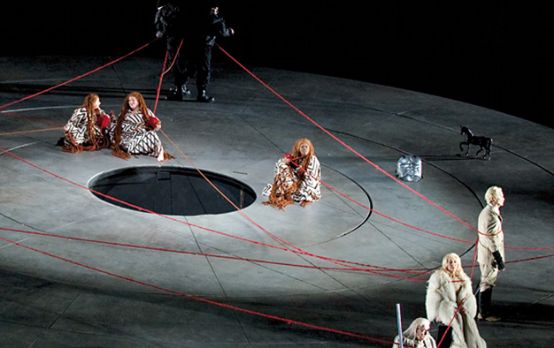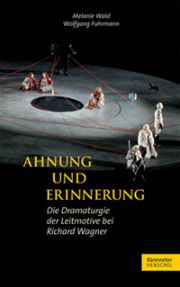Retrospective and forward-looking sensory carriers
Wagner's leitmotif approach is multi-layered and allows the plot to be charged with complexity.

The term "leitmotif" is so closely associated with Wagner's music dramas among music lovers, and in an arguably oversimplified form, that it is always necessary to clear up the accumulated misunderstandings. They are not simple symbols for things like sword or castle, for characters like Tristan or Sieglinde or for abstract concepts like love or deceit. The title of the book by Melanie Wald and Wolfgang Fuhrmann Hunch and memory indicates it unmistakably: Leitmotifs refer to something coming (foreboding) or to something past (memory), they link the course of events forwards and backwards and are much more than just waymarks in the plot - Wagner himself speaks of "emotional signposts". Nor is he the inventor of the term; Meyerbeer, Marschner and Berlioz preceded him in this respect, and it was only Wagner's posterity that reserved the term "leitmotif" for him.
This account tirelessly points out how complex Wagner's use of motifs is and that he brings out the finest nuances by varying a sequence of notes many times - whether through instrumentation, modulation or rhythmic changes - whereby much can only be discovered by listening carefully and repeatedly. There are discoveries to be made on almost every page, which are underpinned by numerous musical examples summarized at the end of the book. Fascinating, for example, is the proof of how Wagner in the Twilight of the gods creates a "mechanism of overwhelming force" through extreme compression of the harmonies, with a "matted leitmotif" and the "massive use of instrumental groups to produce the typical mixed sound".
The text is very easy to read and the structure of the chapters is didactically exemplary. However, the explanations cannot be simplified to such an extent that "this book will also be understandable and accessible to readers with little or no musical training, even if they occasionally have to tolerate music-theoretical jargon". This is a respectable, but ultimately pious wish, because the examples with harmonic references alone do not enable any increase in knowledge without prior training. However, it would be desirable, also from a political point of view, for such circles to gain more insight, because the phalanx of the intolerant Wagner community of the ignorant or semi-educated still receives the largest influx today.
Melanie Wald and Wolfgang Fuhrmann, Intuition and Memory - The Dramaturgy of Leitmotifs in Richard Wagner, 269 S., € 24.95, Bärenreiter/Henschel, Kassel 2013, ISBN 978-3-7618-2260-9








